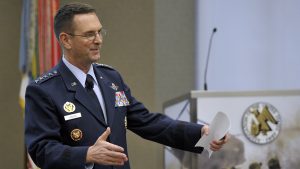 Artificial Intelligence (AI) is becoming a key tool in the arsenal of the U.S. military. In 2022, the Department of Defense (DoD) launched the Chief Digital and Artificial Intelligence Office (CDAO) to become the "go-to place for talent and technical expertise." It was formed by merging several DoD offices to create a single, coordinated effort to advance AI technology and policy. Specifically, the CDAO is charged to:
Artificial Intelligence (AI) is becoming a key tool in the arsenal of the U.S. military. In 2022, the Department of Defense (DoD) launched the Chief Digital and Artificial Intelligence Office (CDAO) to become the "go-to place for talent and technical expertise." It was formed by merging several DoD offices to create a single, coordinated effort to advance AI technology and policy. Specifically, the CDAO is charged to:
- Lead the Department's strategy and policy on data, analytics, and AI adoption, as well as govern and oversee efforts across the Department.
- Empower the development of digital and AI-enabled solutions across the Department, while also selectively scaling proven solutions for enterprise and joint use cases.
- Provide a sophisticated cadre of technical experts that serve as a de facto data and digital response force able to address urgent crises and emerging challenges with state-of-the-art digital solutions.
A key focus of the CDAO will be how to use AI to better coordinate forces in support of the DoD's Joint All-Domain Command Control (JADC2) efforts. Initial tactical goals include:
- Review the Department's policy, strategy, data governance, analytics, and AI to create an integrated Data, Analytics, and AI strategy.
- Provide the enterprise-level infrastructure and services that enable efforts to advance adoption of data, analytics, and AI.
- Solve and scale enterprise and joint use cases in support of the National Defense Strategy and the Advancing Data and AI (ADA) initiative.


 As with other networking and professional development events, job fairs are also transitioning back to their in-person form, but not without changes. The beauty of a job fair is the
As with other networking and professional development events, job fairs are also transitioning back to their in-person form, but not without changes. The beauty of a job fair is the  While the focus of government modernization has been transitioning government into the Cloud,
While the focus of government modernization has been transitioning government into the Cloud, 


